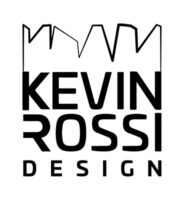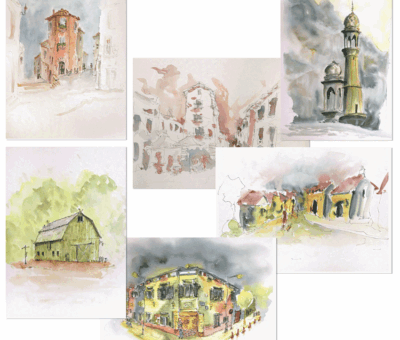How Kevin Rossi Design Adapts & Repurposes Spaces In 6 Ways
Kevin Rossi Design strives to find sustainable and innovative ways that define interior space. For project Quendon, in Cape Town, designers were challenged by creating a fully equipped living space from a deserted single room, and they approached a method known as the adaptive reuse.
Adaptive reuse is the process of repurposing buildings or spaces (other than those originally intended to address) for viable new uses and modern functions suited to present-day needs, to successfully achieve this within interior design, the following principles need to be understood.
There are three main principals of adaptive reuse, analysis, strategy & tactics.
Analysis – the first step when repurposing interior space, is understanding its context, environment, form & structure. Without an understanding of this, it is difficult to appreciate the relationship of the client and the space. For Quendon, the brief was simply, design space that could be sublet for long term rental. This space should include, a bedroom, dining area, preferably a lounge, kitchen & bathroom. Previously, the space was designed to be an extension of the apartment next to it, a bedroom. It was later abandoned due to the disconnect of the main apartment.
Strategy – there are three types of strategies for adaptions used within space, that provide a degree of collaboration between the old and the new.
- If the existing space is so transformed that it can no longer viably exist independently and the nature of the remodelling is such that the old and new are completely intertwined, then the category is intervention, a good example of this is the new aluminium sliding windows we proposed for project Quendon. Here we removed the old openings and introduced a larger surface which increased the overall floor space.
- If a new autonomous element is placed into the confines of the existing, and its dimensions completely dictated by it (that is, the new element is built to fit), then the category is insertion. Insertion is a very lively word – it defines that act of inserting or carefully placing something within something else. An example of this is the “cupboard within a cupboard”.
“To get around the issue of insufficient storage space, we created a flexible structural element that could extend out from an existing cupboard that it shared space with, resulting in the design of a cupboard within a cupboard” (Rossi, 2020).
3. Lastly, installation is to install something and to place it in position that allows for it to become established in that location. Generally, by installing objects that have been carefully conceived and placed within the interior space these will have no lasting impact on a building. There are many possibilities here – the use art or objects to develop a relationship with the space that would have not been previously possible is often used by our design team.
Tactics – developing and exploring different creative solutions is a key element of our focus for clients. They are referred to as tactics or “details” within repurposing space, and their nuanced coordination may ensure an unforgettable interior experience, where light, movement, surface, planes, objects and openings are combined to create memorable and extraordinary interior spaces.
1. Planes – Part of a primary tactic for an interior designer, ‘planes’ can come horizontal or vertical and are the most recognizable elements in a built environment. They are identified as Façade, Walls, Floors and Soffit. At Kevin Rossi Design, we use transparent walls or three-dimensional wall claddings as a feature element for our projects – generally they enhance the aura of a space.
2. Objects – whether an element of furniture, a pair of shoes in a shop, or an exhibit in a museum – ‘objects are focal points in an interior environment. The positioning of these significant entities is an act that can exemplify the essential principles of any interior. At the Quendon project, we used a single swivel armchair as the main focal point in the interior space, that invites the occupant to engage with the space through seating.
3. Light – When articulated and deployed thoughtfully, both natural and artificial sources of light have the potential to enrich and transform interior space. The symbolism of light, and its magical dimensions, can be manipulated to instil supernatural sensations in onlookers. We use a variety of lighting techniques within an interior to create certain effects.
4. Surface – or more frequently referred to as materials, are selected and deployed in the design of an interior in order to create specific spatial identities. Surfaces are critical tactics for the designer to consider, as they are the cover or overlay of the space with which the inhabitant or occupant of the environment will interact. In South Africa, designers have access to many locally produced materials that can be translated into objects as well.
5. Openings – both imposed and found, impact significantly on the design of the interior. A carefully crafted view through a space, via a series of openings such as doorways or windows, will imply connectivity and promote movement.
The delineation of these apertures will often entice the user of the space to move and circulate in an interior, in order to interact with what is being offered through the opening. Therefore, it is important to understand that a critical element of the tactic of creating or reusing an opening in an interior is that it is a device that is closely associated with movement. For our project in Quendon, we introduced an opening, by removing a wall between the kitchen and the main living space – by doing this the occupant can now engage with the two areas in a fluid way.
6. Movement – Stairs, corridors, bridges, lifts, escalators, walkways, ramps; there are numerous ways in which movement will take place in the built environment and in the interior.
Based on all six tactics explained we can see that all work together and have relevance – movement will often be considered in conjunction with other tactical ideas. Objects placed in specific spaces will be organised in relation to how people may circulate around them. Planes such as floors, walls and ceilings will be designed to accommodate flow, as will surfaces, openings and the articulation of light. Therefore, it is important to note that movement and the elements that facilitate it are one part of the tactical jigsaw that the designer of inside space is required to assemble.
We’re continually inspired by the thought and principles behind good design. For more visit Kevin Rossi.
You might also like...
-
Happiness in the Home – Ways to Beat the January Blues

Beat the blues by creating your own cosy luxury sanctuary at home. Here we share some top designer tips from Black and Milk to help ...
-
Architecture Focus | Stephen Hitchcock from Stretch Architects

Stretch Architects is a South African Architecture and Design Studio based in Cape Town and Durban with a mission to create buildings in a natural ...
-
Brett Field: Collaborative Masterpieces – How Interior Designers Can Partner with Artists

Interior design is an art form in itself, but there’s something magical that happens when interior designers collaborate with artists. By joining forces, these two ...































